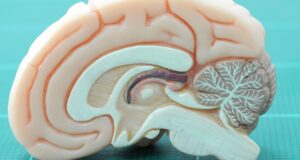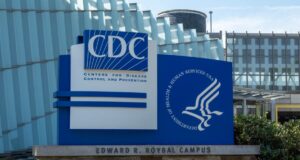Walking your way to a longer life: New research highlights how modest physical activity boosts longevity for everyone, especially the least active.
 Study: Physical activity and life expectancy: a life-table analysis. Image Credit: Monkey Business Images / Shutterstock
Study: Physical activity and life expectancy: a life-table analysis. Image Credit: Monkey Business Images / Shutterstock
In a recent study published in the British Journal of Sports Medicine, a group of researchers assessed the impact of low physical activity (PA) on life expectancy and potential gains from increased activity at individual and population levels.
Background
Low PA is a significant global contributor to non-communicable diseases and premature mortality. Increasing PA levels reduces the risk of death across all age groups and intensities, with the greatest benefits for the least active individuals. Despite global policies like the World Health Organization’s (WHO) PA guidelines and action plans, disparities persist, particularly among socioeconomically disadvantaged groups.
Existing estimates of the health burden of low PA are likely underestimated due to reliance on self-reported data, which lacks accuracy. The introduction of device-measured data offers an opportunity to better capture the relationship between PA and mortality, revealing a more pronounced association than previously estimated.
Recent evidence from device-measured PA shows stronger associations with mortality, necessitating the need for further research to refine disease burden estimates and guide interventions.
About the Study
A life table for the 2019 United States (U.S.) population was constructed using 2017 mortality data from the National Center for Health Statistics, incorporating potential impact fraction (PIF) calculations to estimate how varying PA levels affect mortality. PIF quantifies the proportional reduction in risk achieved through hypothetical changes in exposure, helping model the impact of PA on life expectancy. This approach allowed the derivation of alternative life tables to estimate life expectancy under different PA levels.
Population PA levels were based on data from the 2003–2006 National Health and Nutritional Examination Survey (NHANES), which used hip-worn accelerometers to measure activity. Only participants with sufficient wear time (at least 10 hours daily for four or more days) were included, resulting in the exclusion of 824 individuals.
Total PA was expressed as counts per minute (cpm), a metric reflecting movement intensity. For consistency, the study followed the same exclusion criteria as a key meta-analysis used to model the dose-response relationship between PA and mortality. PA levels were divided into quartiles, representing increasing activity levels.
Using hazard ratios for all-cause mortality across PA quartiles, counterfactual mortality scenarios were modeled. Life expectancy estimates were generated for each PA quartile and compared to scenarios where all individuals were either in the least active or most active quartiles.
Differences in PA levels between quartiles were translated into walking equivalents for greater clarity, aligning physical activity with an understandable metric. Estimates of life expectancy gains from additional walking were provided for individuals aged 40 and older, incorporating a lag period to reflect gradual mortality risk reductions. To account for uncertainties, the study employed probabilistic sensitivity analysis, using bootstrapping methods to enhance reliability.
Study Results
In 2017, the average life expectancy in the US was 78.6 years. Estimates suggest that if all Americans aged 40 and older were as active as the least active 25% (Q1), life expectancy would decline by 5.8 years, resulting in an average of 73.0 years.
Gradual increases in PA to the levels of the second (Q2) and third quartiles (Q3) would yield life expectancy gains of 0.6 years and 3.5 years, respectively. These increments would correspond to life expectancies of 79.2 years and 82.0 years. In contrast, if individuals achieved activity levels comparable to the most active quartile (Q4), life expectancy would reach 83.7 years, representing a 5.3-year increase.
To achieve the health benefits observed in the most active quartile, individuals in group Q1 would require the equivalent of an additional 111.2 minutes of walking daily. This increase in PA could potentially extend their life expectancy by up to 10.9 years.
Each additional hour of walking contributes 169.1 minutes to life expectancy on average, reflecting a strong dose-response relationship. The relationship between PA and mortality follows a non-linear curve, with the greatest relative benefits seen at lower activity levels.
For individuals transitioning between quartiles, the required additional walking varies. Moving from Q1 to Q2 requires an extra 28.5 minutes of walking per day, with each hour adding approximately 6.3 hours to life expectancy. Progressing from Q2 to Q3 necessitates 27.8 additional minutes daily, with each hour yielding nearly 3 hours of added life. From Q3 to Q4, individuals would need to walk an extra 55 minutes daily, where each hour of walking extends life by just under one hour.
For individuals in Q2 aiming to reach Q4, an additional 82.8 minutes of daily walking is required. Although life expectancy gains diminish at higher activity levels, modest increases in PA at lower levels offer substantial health benefits, highlighting their public health significance.
Conclusions
To summarize, this study underscores the profound impact of PA on life expectancy, particularly among the least active individuals. Modest increases in PA, such as an hour of daily walking, can translate to significant gains, adding up to six hours of life expectancy per additional walking hour.
The analysis improves on previous self-reported estimates using precise accelerometer data, revealing a stronger association between PA and reduced mortality. The findings advocate for greater investment in PA-promoting environments and policies, such as urban planning initiatives, active transport, and increased access to green spaces, to foster population-level improvements in health.




